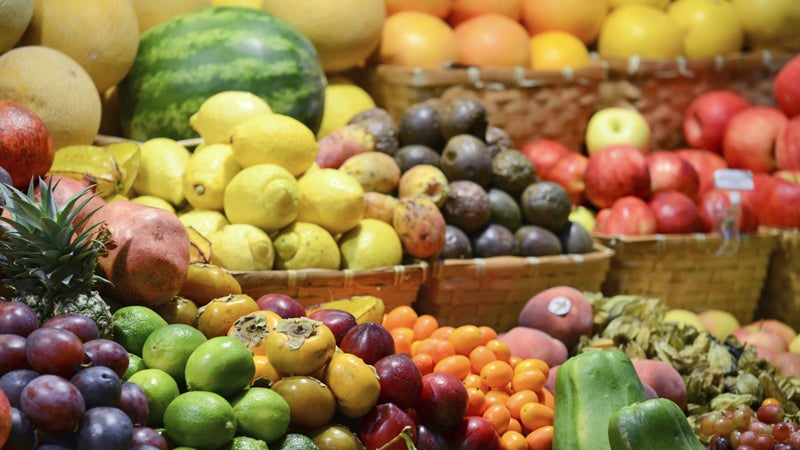Ah, lucky number seven: You’re referring, of course, to in which people who ate the most fruit and vegetables on a daily basis (seven or more portions, as defined by the UK’s Department of Health portion sizes) had a 42 percent reduced risk of dying over the course of eight years when compared to those who ate less. And while aren’t 100 percent in line with these findings, the seven-a-day goal is certainly a good one to shoot for.
So, what exactly is a serving of produce? Let’s start with whole fruits: A small apple or banana is traditionally one serving, says Jaclyn London, RD, CDN, senior clinical dietitian at the Mount Sinai Hospital in New York City. “But fruit has gotten larger and larger over the years, and going by today’s standards that would have to be a pretty small apple or banana,” she adds. “Most are probably closer to one and a half servings.”
As for veggies and larger fruits, a good rule of thumb is to think of one cup raw or cooked (or two cups of raw leafy greens) as a serving. A smoothie with one cup blueberries and one cup strawberries? Two servings. An omelet with a half-cup each of tomatoes and spinach? Another one—and all before lunch!
Veggie-based soups and sauces are another great way to sneak in produce. “A cup of soup—as long as it’s not creamy or thick like chowder or beef stew—can often count as a serving of vegetables, and it’s an easy thing to add to your lunch or dinner,” says London. Bonus points if it’s got beans or lentils; while they don’t necessarily count toward your seven a day (they’re grouped with grains rather than produce), these superfoods contain many of the same healthful nutrients, like fiber and antioxidants.
In the study, fruit juices, purees, and dried fruits could each only count toward one portion a day, since they tend to contain more sugar and less nutrients, ounce for ounce, than their fresh or frozen counterparts. And in case you were wondering, French fries (or anything fried, for that matter) shouldn’t count toward your total, London says—but a slice of pizza can, especially if you top it with veggies like broccoli or peppers and onions.
London does suggest, however, not getting too caught up in a specific number of servings, and to focus instead on what percentage of your total food intake is devoted to fruits and vegetables. At most meals, fill half your plate with produce (like a salad or non-starchy side dish) and then add the grains and proteins from there. “Do this regularly and you’ll be well on your way to getting your daily full, without having to think too hard about it,” she says.
Bottom line: A veggie omelet for breakfast, a bowl of soup for lunch and a side salad with dinner can get you the majority of your daily servings; snack on whole or dried fruits, sip a smoothie, or top your dessert with berries to round out your total.


